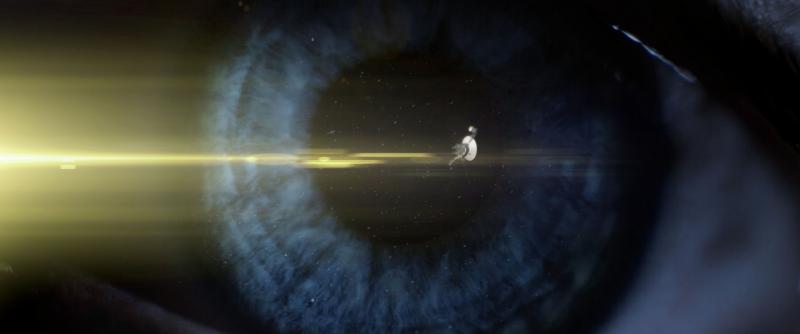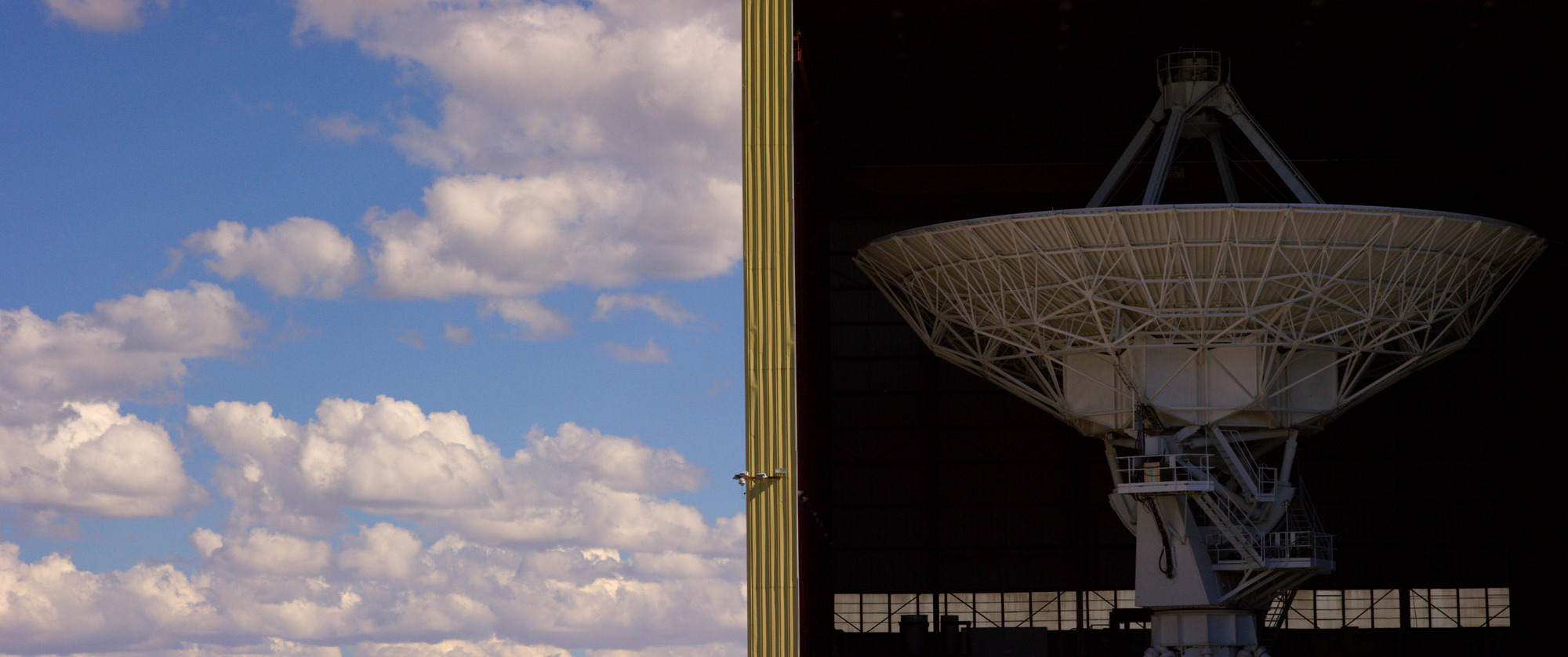The Farthest: Voyager's Interstellar Journey, BBC Four review - awe-inspiring and life-affirming space odyssey | reviews, news & interviews
The Farthest: Voyager's Interstellar Journey, BBC Four review - awe-inspiring and life-affirming space odyssey
The Farthest: Voyager's Interstellar Journey, BBC Four review - awe-inspiring and life-affirming space odyssey
'Storyville' celebrates humanity’s most daring exploration into our solar system and beyond

Long before Barack Obama spoke about the audacity of hope, the Voyager mission left the Earth driven by something else: the audacity of curiosity. What do the outer planets look like? What are they comprised of? And what’s beyond that?
Storyville: The Farthest - Voyager’s Interstellar Journey is an immersive study of NASA’s most audacious mission. Condensed by BBC Four by 30 minutes from a cinematic release, this incredible documentary looks at the infinite and infinitesimal questions that Voyager dared to answer. It makes you proud to be human, and embarrassed to still use your fingers when attempting maths.
In four billion years, the Sun will collapse but Voyager will still be travelling
From the words of those who were there, we are introduced to the time before Voyager – Jupiter, Saturn, Uranus and Neptune were merely mysterious blobs in the sky. We knew about their colour, and a couple of satellite moons, but that was it. By pure luck, NASA was presented with a once-in-176-year opportunity – all four planets would be aligned. Armed with the processing power of a car key fob, Voyager 1 and 2 fired towards deep space on the boldest mission ever attempted.
Voyager’s revelations are as exciting today as they were 40 years ago. Through those two little spacecrafts, it was like humanity itself was passing through the rings of Saturn, witnessing the eruptions of Io, and skimming the blue clouds of Neptune. Recounting the experience clearly brings back those emotions of stress, wonder and melancholy to the scientists and engineers involved. Over 30 years of pressure, all relying on constructions and calculations made in the mid-'70s. The wiring was protected by tin foil from the local convenience store, and it was slingshotting across our solar system at 10 miles per second!
Once Voyager passed Neptune, its planetary exploration was complete and it came to its second objective – to reach interstellar space. It was the very first man-made object to leave our solar system and reach out to the stars, so they put a message in the bottle: a gold record. Were an alien race ever to play it, they’d discover images, greetings, Azerbaijani folk music, and Chuck Berry (but not The Beatles, who refused on account of the fact that there are no music rights in space). The Farthest is a perfect 90-minute ode to space and humanity. The visual imagery is beautiful, the interviewees are engaging, even the story had ups and downs worthy of Hollywood. The soundtrack especially is impeccable, with “Us and Them” from Pink Floyd’s The Dark Side of the Moon reaching a euphoric climax as we first see the far side of Saturn. It’s enough to make you regret not watching it in IMAX.
The Farthest is a perfect 90-minute ode to space and humanity. The visual imagery is beautiful, the interviewees are engaging, even the story had ups and downs worthy of Hollywood. The soundtrack especially is impeccable, with “Us and Them” from Pink Floyd’s The Dark Side of the Moon reaching a euphoric climax as we first see the far side of Saturn. It’s enough to make you regret not watching it in IMAX.
The Voyager mission had two separate purposes for the human race: to gain a greater understanding of our solar system, and to greet the wider universe. In 2012, President Barack Obama announced that Voyager 1 had finally left the solar system, its audacious mission now complete. In four billion years, the Sun will collapse but Voyager will still be travelling. It might be the only reminder we ever existed on this pale blue dot. If that sounds a bit depressing, watch The Farthest; you can’t help but feel proud.
rating
Share this article
The future of Arts Journalism
You can stop theartsdesk.com closing!
We urgently need financing to survive. Our fundraising drive has thus far raised £49,000 but we need to reach £100,000 or we will be forced to close. Please contribute here: https://gofund.me/c3f6033d
And if you can forward this information to anyone who might assist, we’d be grateful.

Subscribe to theartsdesk.com
Thank you for continuing to read our work on theartsdesk.com. For unlimited access to every article in its entirety, including our archive of more than 15,000 pieces, we're asking for £5 per month or £40 per year. We feel it's a very good deal, and hope you do too.
To take a subscription now simply click here.
And if you're looking for that extra gift for a friend or family member, why not treat them to a theartsdesk.com gift subscription?
more TV
 theartsdesk Q&A: director Stefano Sollima on the relevance of true crime story 'The Monster of Florence'
The director of hit TV series 'Gomorrah' examines another dark dimension of Italian culture
theartsdesk Q&A: director Stefano Sollima on the relevance of true crime story 'The Monster of Florence'
The director of hit TV series 'Gomorrah' examines another dark dimension of Italian culture
 The Monster of Florence, Netflix review - dramatisation of notorious Italian serial killer mystery
Director Stefano Sollima's four-parter makes gruelling viewing
The Monster of Florence, Netflix review - dramatisation of notorious Italian serial killer mystery
Director Stefano Sollima's four-parter makes gruelling viewing
 The Diplomat, Season 3, Netflix review - Ambassador Kate Wyler becomes America's Second Lady
Soapy transatlantic political drama keeps the Special Relationship alive
The Diplomat, Season 3, Netflix review - Ambassador Kate Wyler becomes America's Second Lady
Soapy transatlantic political drama keeps the Special Relationship alive
 The Perfect Neighbor, Netflix review - Florida found-footage documentary is a harrowing watch
Sundance winner chronicles a death that should have been prevented
The Perfect Neighbor, Netflix review - Florida found-footage documentary is a harrowing watch
Sundance winner chronicles a death that should have been prevented
 Murder Before Evensong, Acorn TV review - death comes to the picturesque village of Champton
The Rev Richard Coles's sleuthing cleric hits the screen
Murder Before Evensong, Acorn TV review - death comes to the picturesque village of Champton
The Rev Richard Coles's sleuthing cleric hits the screen
 Black Rabbit, Netflix review - grime and punishment in New York City
Jude Law and Jason Bateman tread the thin line between love and hate
Black Rabbit, Netflix review - grime and punishment in New York City
Jude Law and Jason Bateman tread the thin line between love and hate
 The Hack, ITV review - plodding anatomy of twin UK scandals
Jack Thorne's skill can't disguise the bagginess of his double-headed material
The Hack, ITV review - plodding anatomy of twin UK scandals
Jack Thorne's skill can't disguise the bagginess of his double-headed material
 Slow Horses, Series 5, Apple TV+ review - terror, trauma and impeccable comic timing
Jackson Lamb's band of MI5 misfits continues to fascinate and amuse
Slow Horses, Series 5, Apple TV+ review - terror, trauma and impeccable comic timing
Jackson Lamb's band of MI5 misfits continues to fascinate and amuse
 Coldwater, ITV1 review - horror and black comedy in the Highlands
Superb cast lights up David Ireland's cunning thriller
Coldwater, ITV1 review - horror and black comedy in the Highlands
Superb cast lights up David Ireland's cunning thriller
 Blu-ray: The Sweeney - Series One
Influential and entertaining 1970s police drama, handsomely restored
Blu-ray: The Sweeney - Series One
Influential and entertaining 1970s police drama, handsomely restored
 I Fought the Law, ITVX review - how an 800-year-old law was challenged and changed
Sheridan Smith's raw performance dominates ITV's new docudrama about injustice
I Fought the Law, ITVX review - how an 800-year-old law was challenged and changed
Sheridan Smith's raw performance dominates ITV's new docudrama about injustice
 The Paper, Sky Max review - a spinoff of the US Office worth waiting 20 years for
Perfectly judged recycling of the original's key elements, with a star turn at its heart
The Paper, Sky Max review - a spinoff of the US Office worth waiting 20 years for
Perfectly judged recycling of the original's key elements, with a star turn at its heart

Add comment